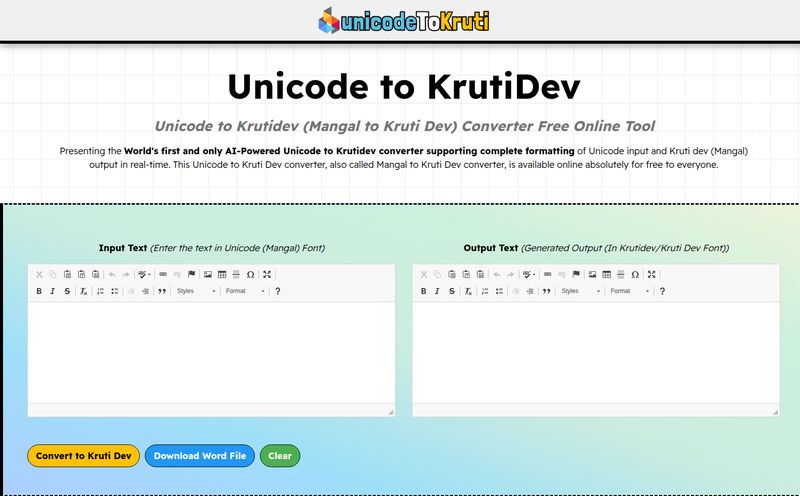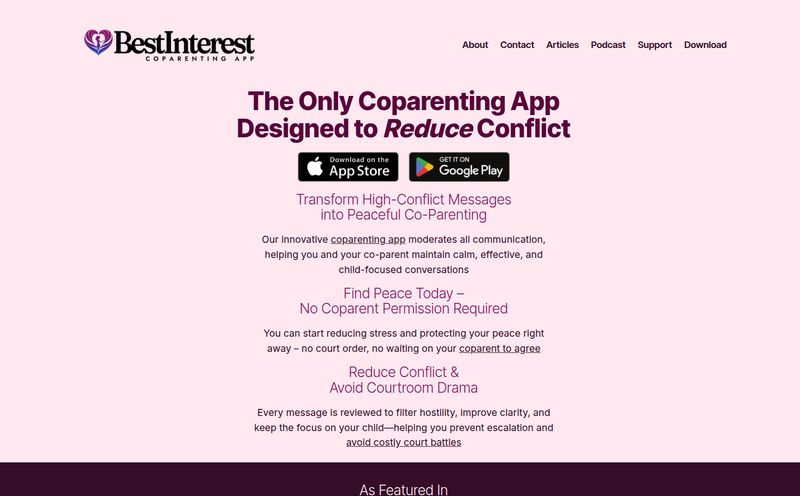If you've ever managed a software project, you know the grind. The endless meetings, the shifting priorities, and, of course, the soul-crushing task of writing user stories. You sit there, staring at a blank Jira ticket, trying to channel your inner user, meticulously crafting the perfect “As a [user], I want to [action], so that [benefit]…” It’s a necessary evil, but man, can it be a drag.
I’ve been in the digital marketing and project management trenches for years, and I’ve seen my fair share of tools that promise to make life easier. Most of them are just shiny new distractions. So when I stumbled upon Epicmatic, a tool that claims to use AI to generate agile epics and user stories, my professional skepticism kicked in immediately. Another AI gimmick? Or something genuinely useful?
I had to find out. So I grabbed a coffee, signed up for their free trial, and took it for a spin.
So, What Exactly is Epicmatic?
In simple terms, Epicmatic is an AI-powered assistant for agile project planning. You feed it a high-level task description and the technical stack your team is using (e.g., React, Python, AWS), and it spits out a structured set of user stories, complete with acceptance criteria and even story point estimates. The goal is to take the grunt work out of backlog grooming and sprint planning, letting you and your team focus on the bigger picture.
Think of it as a specialized translator. It takes your vague idea for a feature and translates it into the structured language of Agile development. No more pulling teeth to get the basic stories down on paper. It provides the foundation, so you can spend your time refining and strategizing instead of just… writing.

Visit Epicmatic
Putting Epicmatic to the Test
Signing up was painless. I appreciate any tool that offers a free trial without demanding my credit card details upfront. The interface is clean, minimalist, maybe a little too minimalist for some, but I liked it. No clutter, no confusing menus. Just a clear path to getting started.
Generating User Stories with AI
I decided to give it a classic task: "Create a user login and registration system with email verification." I plugged in a standard tech stack: React for the frontend, Node.js for the backend, and PostgreSQL for the database.
I hit generate and waited. A few seconds later, it produced a pretty impressive list of user stories. Things like:
- "As a new user, I want to be able to register for an account using my email and a password, so that I can access the platform."
- "As a registered user, I want to be able to log in with my credentials, so that I can access my personalized dashboard."
- "As a new user who has just registered, I want to receive a verification email, so that I can confirm my account."
It was all there. The basics were covered, and it was a heck of a lot faster than me typing it all out myself. It even caught a few edge cases I might have forgotten in a first draft.
Acceptance Criteria and Story Points
This is where I started to get genuinely impressed. For each user story, Epicmatic also generated a list of acceptance criteria. For the registration story, it included things like "Password must be at least 8 characters long" and "An error message is displayed if the email address is already in use." This is the tedious stuff that often gets rushed, and having it automated is a huge time-saver.
It also assigned story points. Now, we can all argue until we're blue in the face about the value of story points (I know I have), but having a consistent, AI-generated baseline can actually help standardize estimates across a team. It removes some of the human emotion and subjectivity from the initial guess.
The Good, The Bad, and The AI-Generated
No tool is perfect, right? After playing around with it for a while, I got a pretty good feel for where it shines and where you need to be careful.
Where Epicmatic Shines
The biggest win is speed. What could take a project manager a few hours of focused work can be drafted in minutes. It's an incredible way to kickstart a new project or feature. It combats that “blank page” syndrome effectively. I also think it’s a great tool for standardizing your process. It ensures all your user stories have a consistent format and that acceptance criteria are always considered. For junior PMs or teams new to Agile, it could be an invaluable learning aid.
A Few Words of Caution
Here’s the thing: you can't just copy, paste, and walk away. The output is AI-generated, and human oversight is non-negotiable. The AI doesn’t know your business's specific context, your users' unique quirks, or your company's long-term strategy. I found its output to be about 80% of the way there. That last 20% of refinement, context, and strategic alignment has to come from you and your team.
It's also a classic case of "garbage in, garbage out." If you provide a vague, one-sentence task description, you're going to get a generic, vague set of user stories. The more detail you provide upfront, the better the result will be. And then there's the credit system, which we should probably talk about.
Let's Talk Money: Epicmatic Pricing
Epicmatic runs on a token credit system. Generating stories and criteria costs credits. Here's how their pricing breaks down, straight from their pricing page:
| Plan | Price | Details |
|---|---|---|
| Free Trial | Free | 2,500 token credits (one-time allowance), no credit card required. |
| Basic | €9.90 /month | 20,000 token credits per month. Credits do not roll over. |
| Pro | €24.90 /month | 100,000 token credits per month. Credits do not roll over. |
The free trial is generous enough to let you properly evaluate the tool for a small project. The Basic plan seems ideal for a small team or a single project manager handling one or two products. The Pro plan is clearly aimed at larger teams or agencies juggling multiple projects.
My only real gripe here is that the monthly credits don't roll over. I've always felt that if you pay for something, you should get to keep it. But I understand it from a recurring revenue standpoint. It just means you need to make sure you're getting consistent value from it each month.
Who Is This Tool Really For?
After my testing, I see a clear audience for Epicmatic:
- Scrum Masters and Project Managers: This is the most obvious one. It’s a force multiplier for backlog creation and refinement.
- Small Development Teams & Startups: When you don't have a dedicated PM, this can help developers or founders quickly structure their work without getting bogged down.
- Freelancers and Agencies: Quickly scope out the initial work for a client project and present a well-structured plan.
It’s probably not for massive enterprise teams that already have deeply entrenched, complex processes. But for anyone looking to get more agile with less administrative headache, it's a compelling option.
Frequently Asked Questions about Epicmatic
How does the Epicmatic token system work?
Think of tokens like a currency. Every time you ask the AI to generate something (like a set of user stories or acceptance criteria), it costs a certain number of tokens. The more complex the request, teh more tokens it uses. The free trial gives you a one-time bucket of tokens to try it out.
Is the AI output ready to use immediately?
I would strongly advise against it. The output is a fantastic starting point—a first draft—but it lacks specific business context. Always have a human review, edit, and approve the generated content before adding it to your official backlog.
How is this different from just using ChatGPT?
That's a fair question. While you could try to prompt a general AI like ChatGPT to do this, Epicmatic is a purpose-built tool. It's specifically designed and fine-tuned for this one task. The inputs (tech stack, task) and outputs (stories, criteria, points) are structured, leading to more consistent and relevant results without extensive prompt engineering.
Do my monthly credits roll over if I don't use them?
No. According to their pricing page, credits for the paid monthly plans do not sum up or roll over to the next month. It’s a “use it or lose it” model for each billing cycle.
Final Thoughts: Is Epicmatic Worth It?
I came in a skeptic, but I'm walking away pleasantly surprised. Epicmatic isn’t a magical robot that will run your projects for you. It won't replace a good project manager. But that's not what it's trying to do.
It’s a tool. A very smart, very efficient tool. Think of it less as a self-driving car and more as an incredibly advanced cruise control for your project planning. You still need to keep your hands on the wheel, but it makes the long, straight, boring parts of the drive a whole lot easier.
If you’re constantly bogged down by the ceremony of Agile and want to get back to the substance of building great products, I think Epicmatic is absolutely worth a look. The free trial costs you nothing but a few minutes of your time. Give it a shot on your next feature idea; you might be surprised at how much time you get back.



